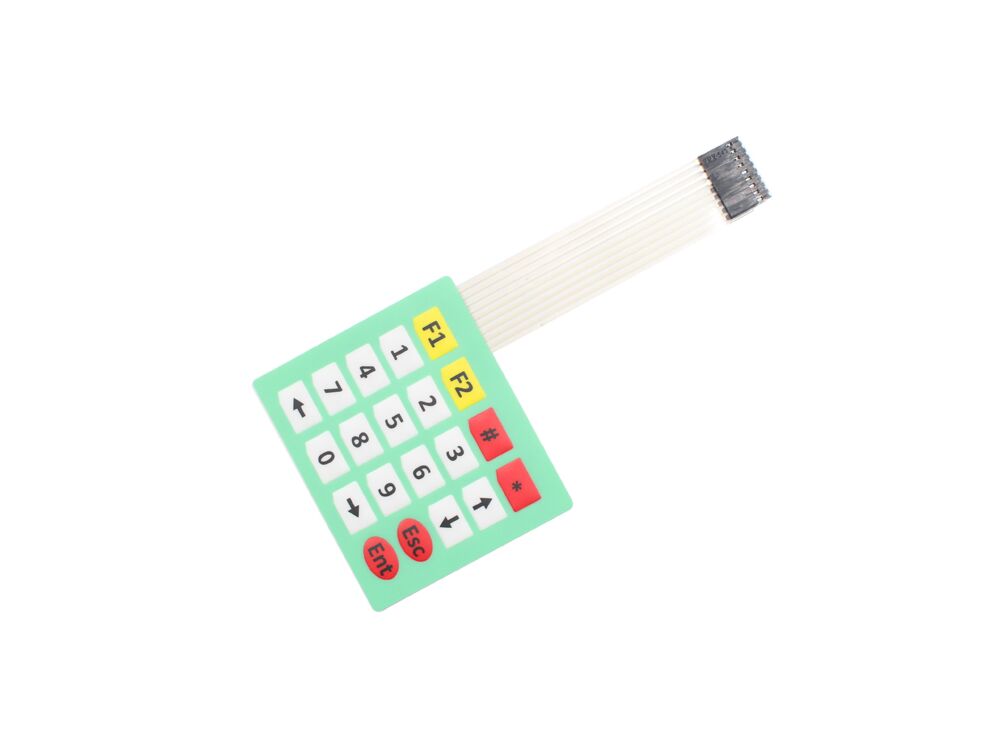Understanding Membrane Layer Changes: The Trick to Trusted and resilient Controls

What Are Membrane Layer Buttons?
Membrane switches are a sophisticated option in the world of customer interface technology, integrating capability and layout seamlessly. These devices serve as an interface in between users and electronic systems, integrating several components into a small layout. Generally constructed from flexible, thin layers of materials, membrane switches are developed to react to touch, allowing users to connect with machinery and electronic devices efficiently.
The primary aspects of a membrane layer switch consist of a printed circuit layer, graphic overlay, and a spacer layer that stops unexpected activation. The graphic overlay can be personalized to show brand identification or customer preferences, enhancing aesthetics while making sure functionality. Membrane switches are commonly made use of in different applications, consisting of medical gadgets, customer electronic devices, and commercial equipment, owing to their sturdiness and resistance to environmental factors such as dampness and dirt.
One of the key advantages of membrane layer switches is their ability to hold up against damage, making them suitable for high-traffic settings. In addition, they are light-weight and require marginal area, allowing for cutting-edge designs in item advancement. In general, membrane layer changes represent a efficient and sensible option for modern-day electronic user interfaces, weding technology with user-centric layout principles.
Just How Membrane Changes Job
The operation of membrane switches over joints on a basic yet effective mechanism that equates customer input right into electronic signals. When an individual presses the button, the leading layer deforms, enabling a conductive aspect in the circuit layer to make call with an equivalent conductive pad on the bottom of the visuals overlay.
The style of membrane buttons can vary, yet they often integrate domes or responsive aspects to give responses to the user, boosting the overall experience - membrane switch. The materials used in membrane switches, such as polyester or polycarbonate, contribute to their sturdiness and resistance to environmental elements, including wetness and dust. The printed circuits are generally encapsulated, which shields them from wear and tear over time.
Advantages of Membrane Layer Buttons

Furthermore, membrane switches are understood for their durability. Constructed from robust materials, they are resistant to dust, wetness, and physical wear, which substantially extends their life expectancy compared to standard mechanical buttons. This toughness makes them specifically ideal for high-traffic settings and applications calling for longevity.
An additional considerable advantage is the ease of cleansing and upkeep. The smooth surface of membrane switches reduces dust accumulation and is usually impervious to spills, making them additional reading ideal for settings that call for constant sanitization.
Additionally, membrane buttons use a streamlined profile, leading to a thinner layout that can be incorporated into various devices without adding mass. This attribute not only improves the visual charm however likewise adds to a more ergonomic item style.
Applications of Membrane Buttons
Versatile and user-friendly, membrane buttons discover applications across a large range of markets, including clinical devices, customer electronic devices, and industrial devices. In the medical area, these switches are indispensable to gadgets such as analysis devices, client monitoring systems, and mixture pumps, where reliability and convenience of cleaning are critical. Their capability to keep and withstand extreme environments performance makes them optimal for such applications.

In customer electronics, membrane layer buttons are utilized in items like microwaves, cleaning equipments, and remote controls - membrane switch. Their smooth layout enables user-friendly customer interfaces, enhancing the total individual experience while supplying durability and resistance to put on and tear
Commercial devices additionally profits from membrane layer switches, particularly in control panels for machinery and automation systems. These switches supply protection against dust and wetness, making certain consistent performance in difficult environments. Their adjustable functions enable makers to customize them to details functional demands, boosting performance and capability.
Picking the Right Membrane Switch
When selecting a membrane layer button, it is vital find this to consider various factors that influence performance and viability for certain applications. The main considerations include ecological problems, responsive comments, toughness, and style specifications.
First, assess the operating environment; switches revealed to dampness, chemicals, or extreme temperatures call for certain materials to make certain durability and capability. Next off, assess the need for responsive comments. Depending on user interaction, some applications might gain from a tactile action to verify activation, while others might like a non-tactile style for aesthetic factors.
Toughness is one more critical variable; membrane buttons must be developed to withstand regular use, effects, and abrasion. Guarantee the picked button can endure the anticipated lifecycle, particularly in high-usage circumstances.

Conclusion
To conclude, membrane switches over work as important parts in the style of long lasting and trustworthy control systems throughout various sectors. Their small design, integrated with robust construction and personalized attributes, enhances customer communication while making certain longevity sought after atmospheres. The versatility of membrane layer switches enables tailored remedies that satisfy details operational requirements, reinforcing their relevance in modern technology. As industries remain to evolve, the value of incorporating effective membrane layer button services can not be overemphasized.
Membrane changes stand for a crucial element of contemporary user interface layout, mixing capability with strength in various applications.Membrane switches are an advanced option in the world of individual interface innovation, incorporating capability and layout effortlessly. Generally built from flexible, slim layers of products, membrane layer buttons are designed to respond to touch, making it possible for users to interact with equipment and digital tools properly.
The design of membrane buttons can differ, however they commonly integrate domes or tactile elements to provide feedback to the customer, enhancing the overall his explanation experience.In verdict, membrane layer changes serve as important components in the style of trustworthy and long lasting control systems across various sectors.
 Spencer Elden Then & Now!
Spencer Elden Then & Now! Ben Savage Then & Now!
Ben Savage Then & Now! Daniel Stern Then & Now!
Daniel Stern Then & Now! James Van Der Beek Then & Now!
James Van Der Beek Then & Now! Peter Billingsley Then & Now!
Peter Billingsley Then & Now!